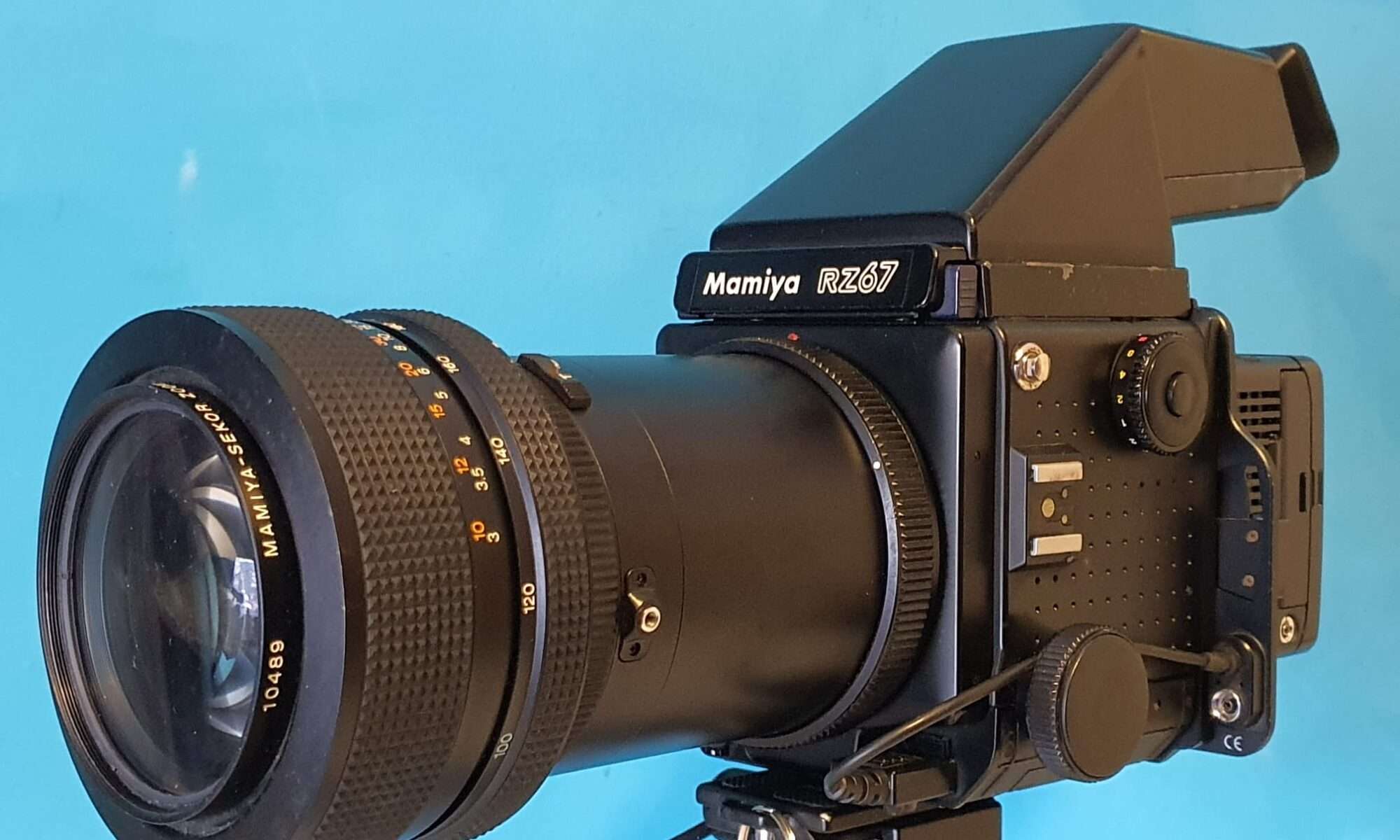2022-02-10: FIRST ENCOUNTERS – RZ67 system & APTUS leaf 65
Recently I received some extra money to persue an old dream:
Get a medium format camera with a digital back and make some awesome architectural pictures!
I know that the Hasselblad/ Zenza Bronica/ Mamiya/ Phase One and some other’s medium format camera’s can produce awesome results, and that they are mainly used for non-moving os slow moving objects.
But- I am more of a digital type than analogue.
So-I really wanted a Hasselblad sort of camera with the awesome 39Mpix digital back.
But my budget is limited, so I had to get my wishes adapted to my budget.
In the end, I ended up with a set of Mamiya RZ67’s, both with a known problem so I could make 1 working camera out of 2 non-fully functional ones.
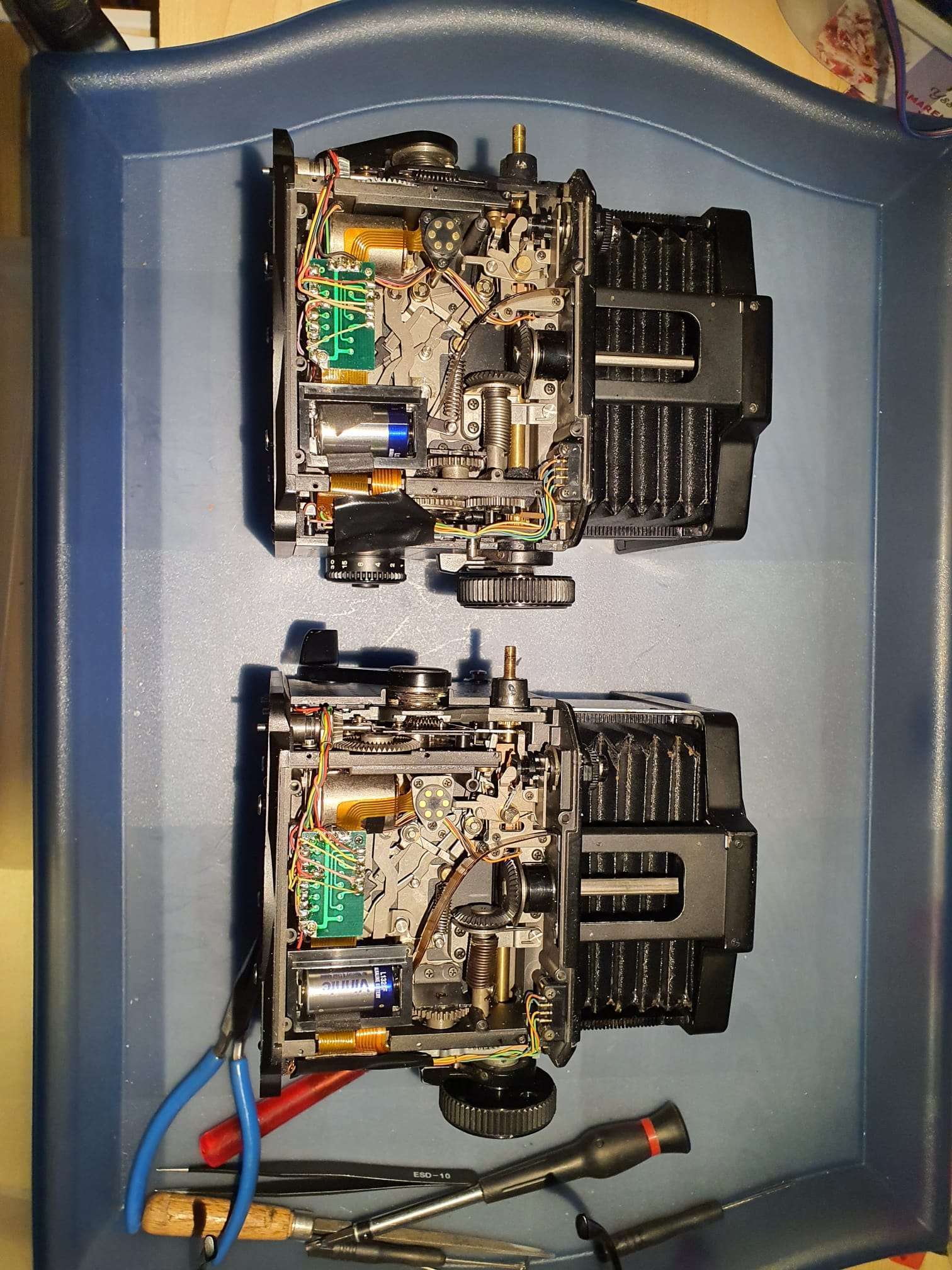
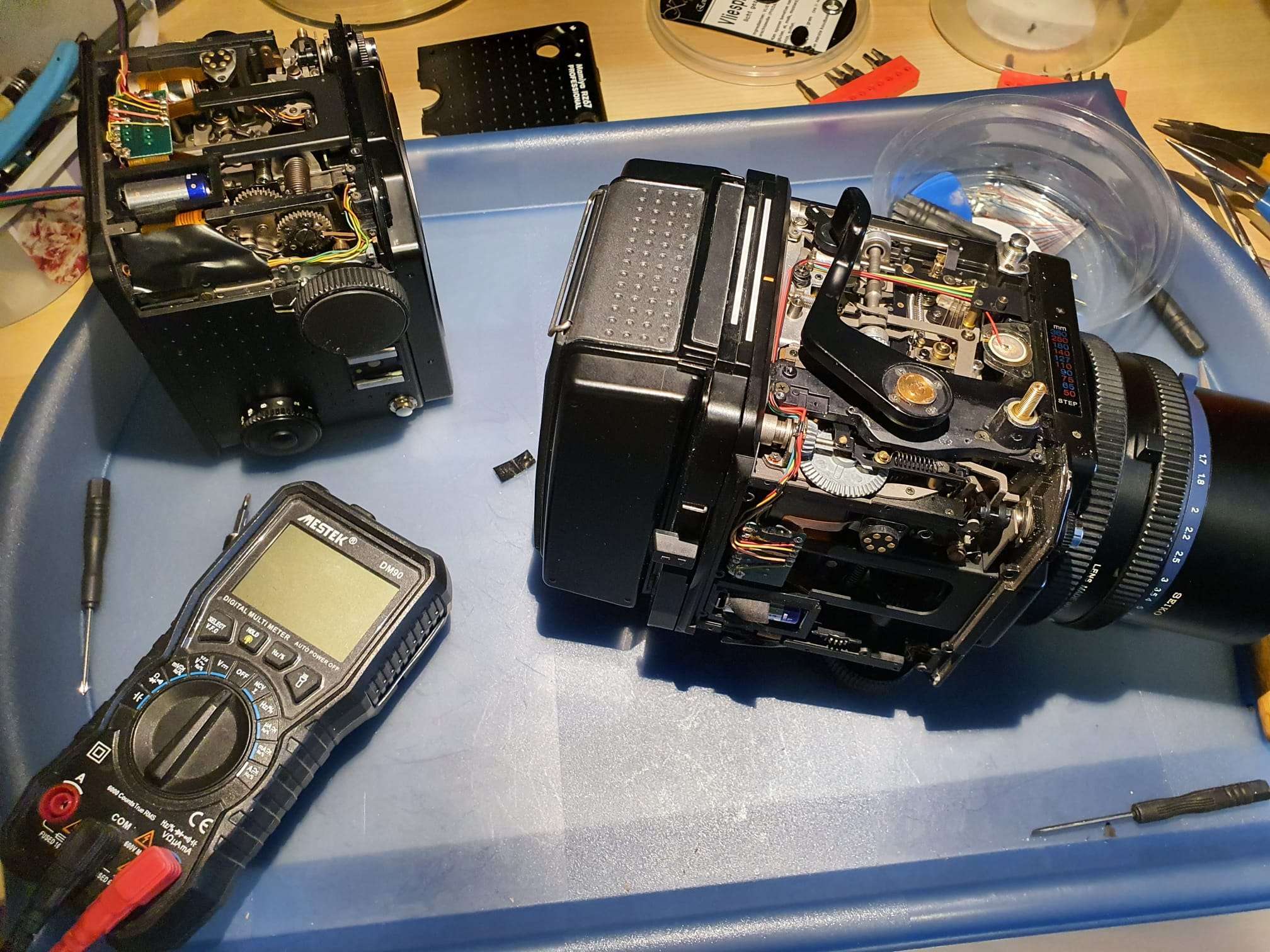
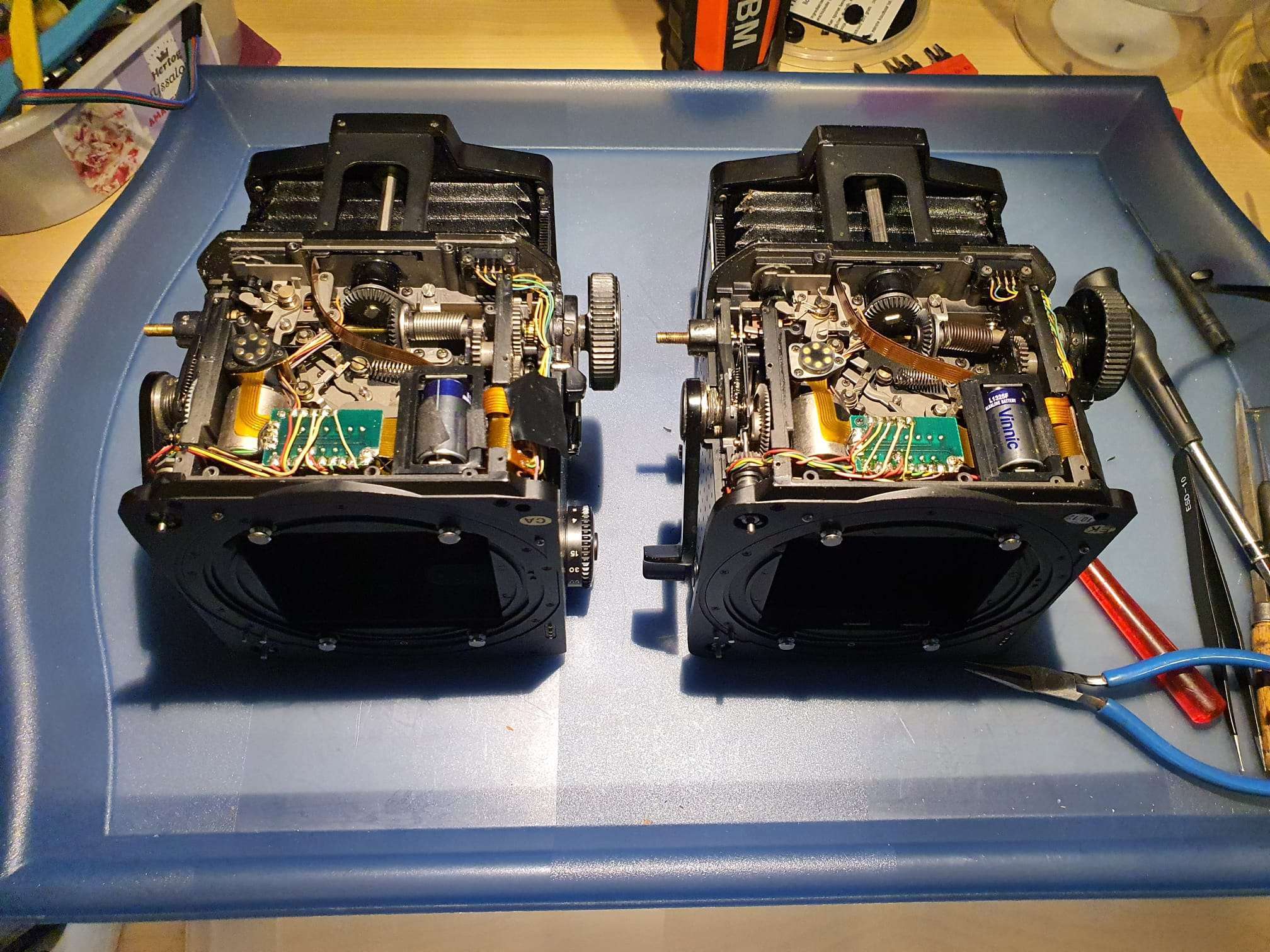
The repair went very well and within a period of 4 hours I had 1 completely working operational RZ67 camera and 1 donor camera with a lot of loose parts, that I will repair upon receival of the new bellow I ordered from AliExpress for 70 Euros.
The camera’s were acquired from Japan, like most of the other parts except the digital back that comes from Sacndinavia:
- 4 Lenses (50mm, 110mm, 100-200mm and 250mm);
- An original 1.4 x teleconverter;
- Both original wired extension tubes for macro photography;
- A Leaf Aptus 65 V-mount 28 Mpix digital back;
- The required adapter plate from Phase One to convert RZ67’s back to V-mount;
- Plus a lot of accessories like a left handgrip, an AE diaphragm viewer that enables automatic lighting (Aperture prio-only where the shutter speed is automated) , belt diaphragm viewer, film back 60x70mm and so on.
I got the lenses from ebay, and two of them really need some internal cleaning.
The one that works best is the 250mm lens.
I got some pictures taken right after everything got mounted on the rig, through the window at home.
I used the AE finder on Automatic, and set the lens’s aperture at 32 to get the sharpest details.
The automatically generated (and set) shutter speed when the position switch of the AE prism viewer is set at ‘A’ in broad daylight against the clouded sky turned out to be around 1/15 second which seems quite long.
And the picture of the tree branches with some birds sitting on them turned out beautifully!
This tree is about 100 feet from my house (30 meters), and the couple of branches fill all of the screen, so the telephoto power of this combination is working very well.
This first digital photo that I made with my RZ67 digital kit and the 250mm Z- Mamiya lens is shown below:
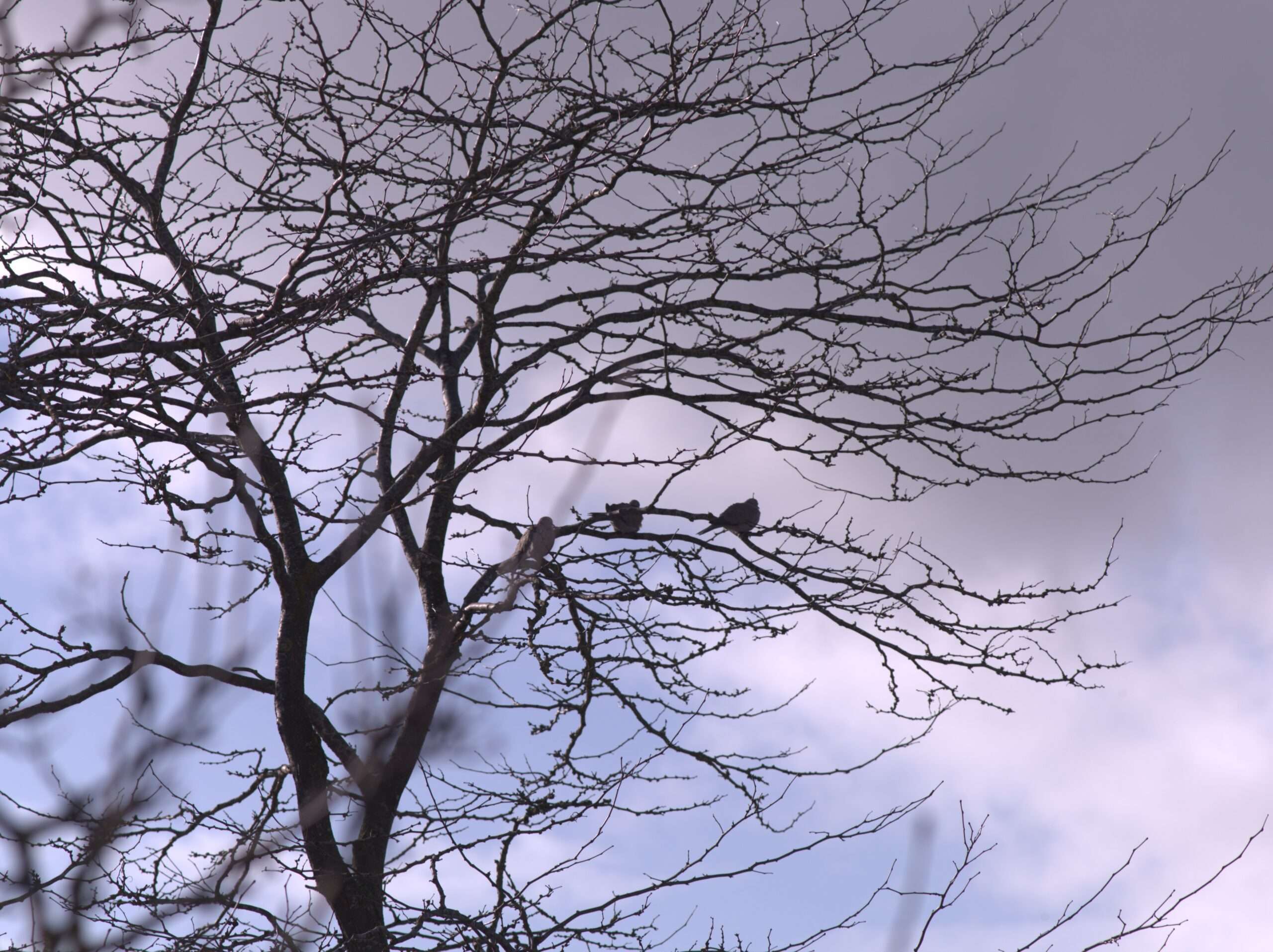
Another thing to get investigated is that the 50mm lens does not get well into focus at all.
Like the front of the camera does not get close enough inside the camera.
The 250 mm works awesome and the 100-200 is fine as well, since this lens has its own focusing ring at the front of the barrell.
What I could not get to work -yet- is the ISO setting. If I set ISO on the Aptus to 400, the AE system of the RZ67 does not recognise this, since I get overlighted images.
I adapted this by setting the lighting correction to +3 on the AE viewfinder which made me produce OK pictures but this does not solve my original issue, since I want it to work automatically.
I really want to use this setting, instead of compensate for it so the Aptus gets less light. Still working on this.
I will measure the adapter’s electrical output on the right pin for the signal to change, like the analogue filmbacks do when you change the ISO settings.
If needed, I can hook up a small switch to the adaptor for ISO settings.
But I am sure it has something to do with settings in the Aptus 65, since you can configure almost anything and I am still finding out what I need to set for this to work properly with the Phase One converter plate.
The complete setup looks like this, with the 100-200 mm zoomlens attached:
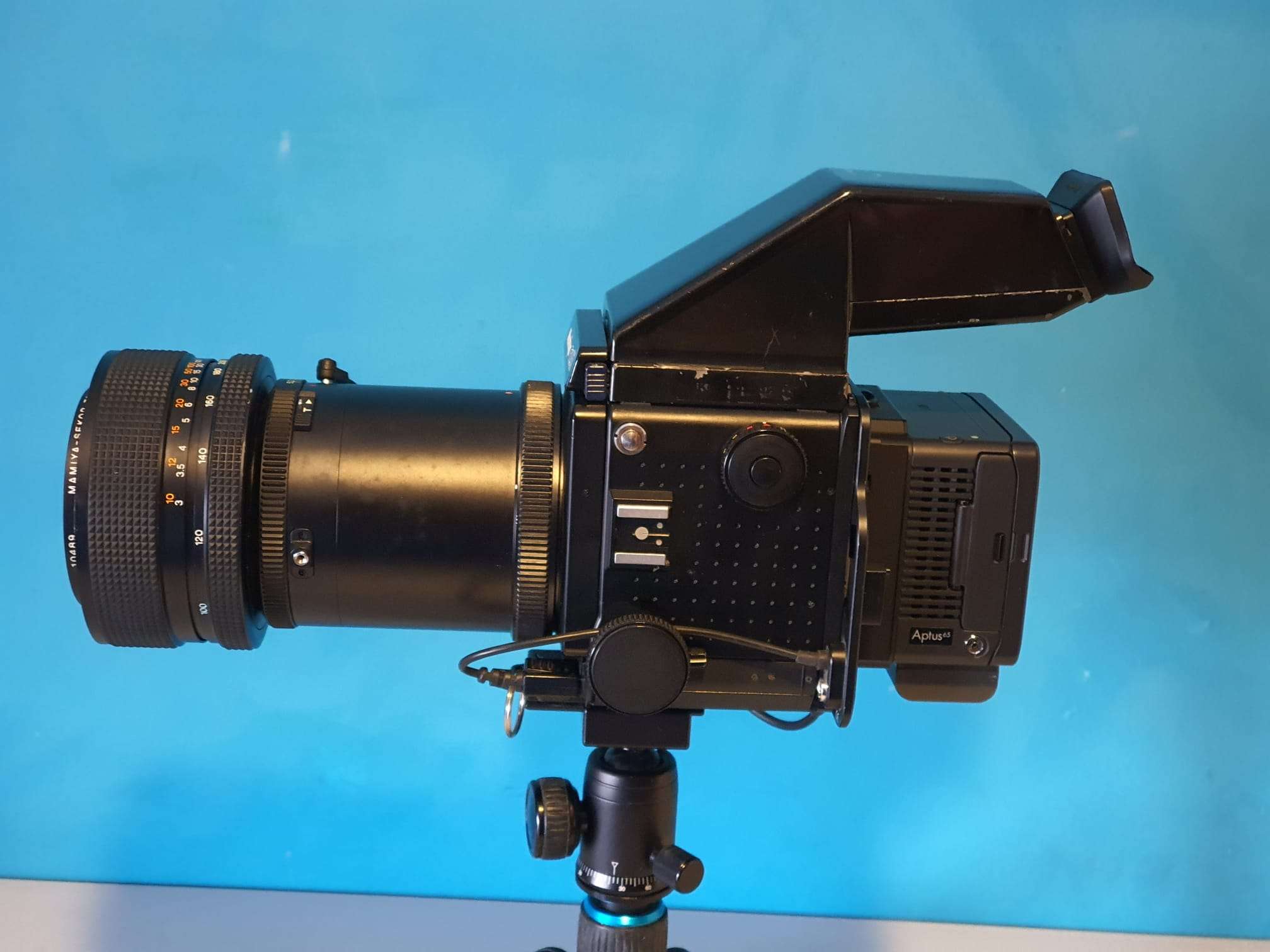
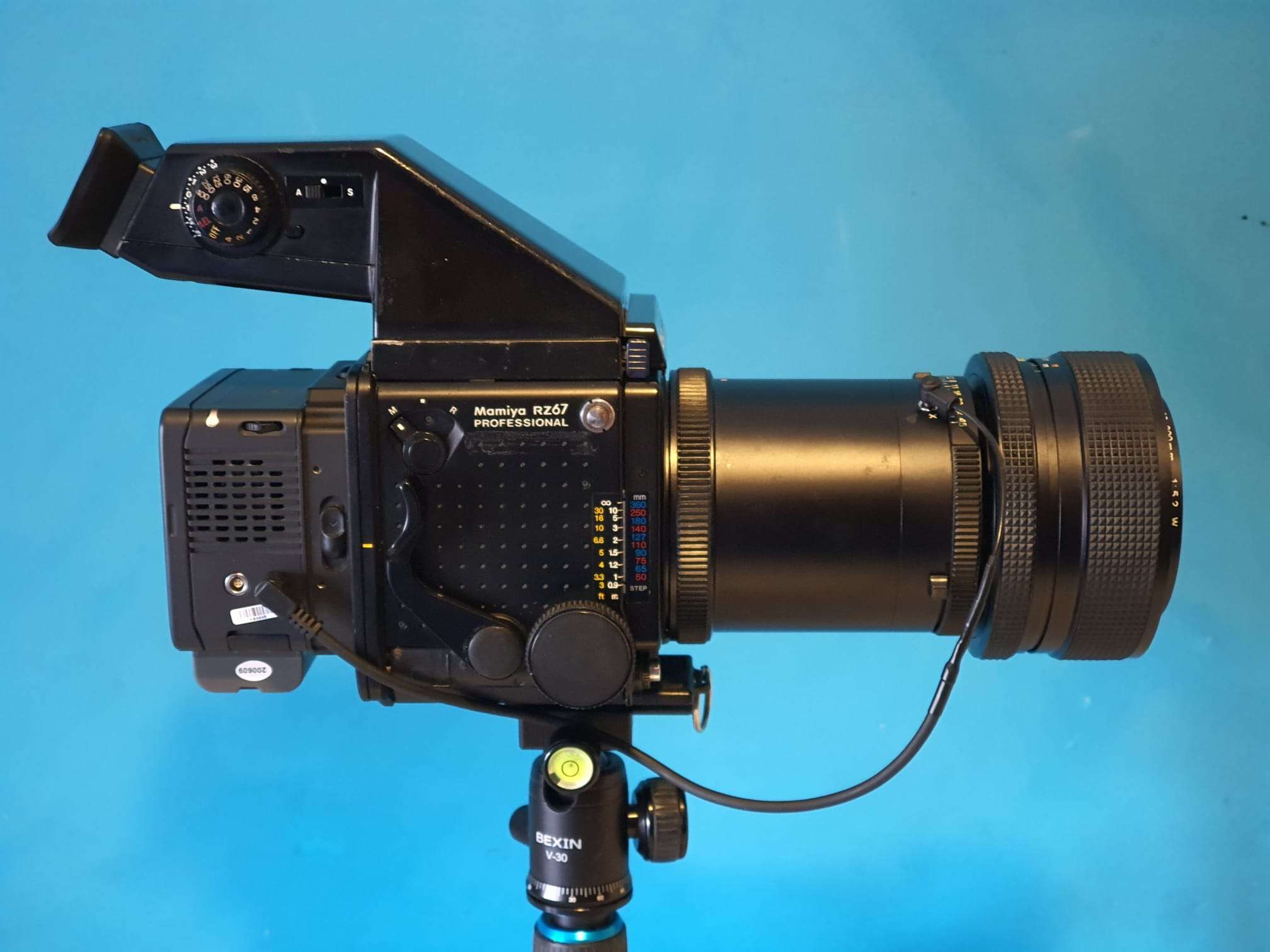


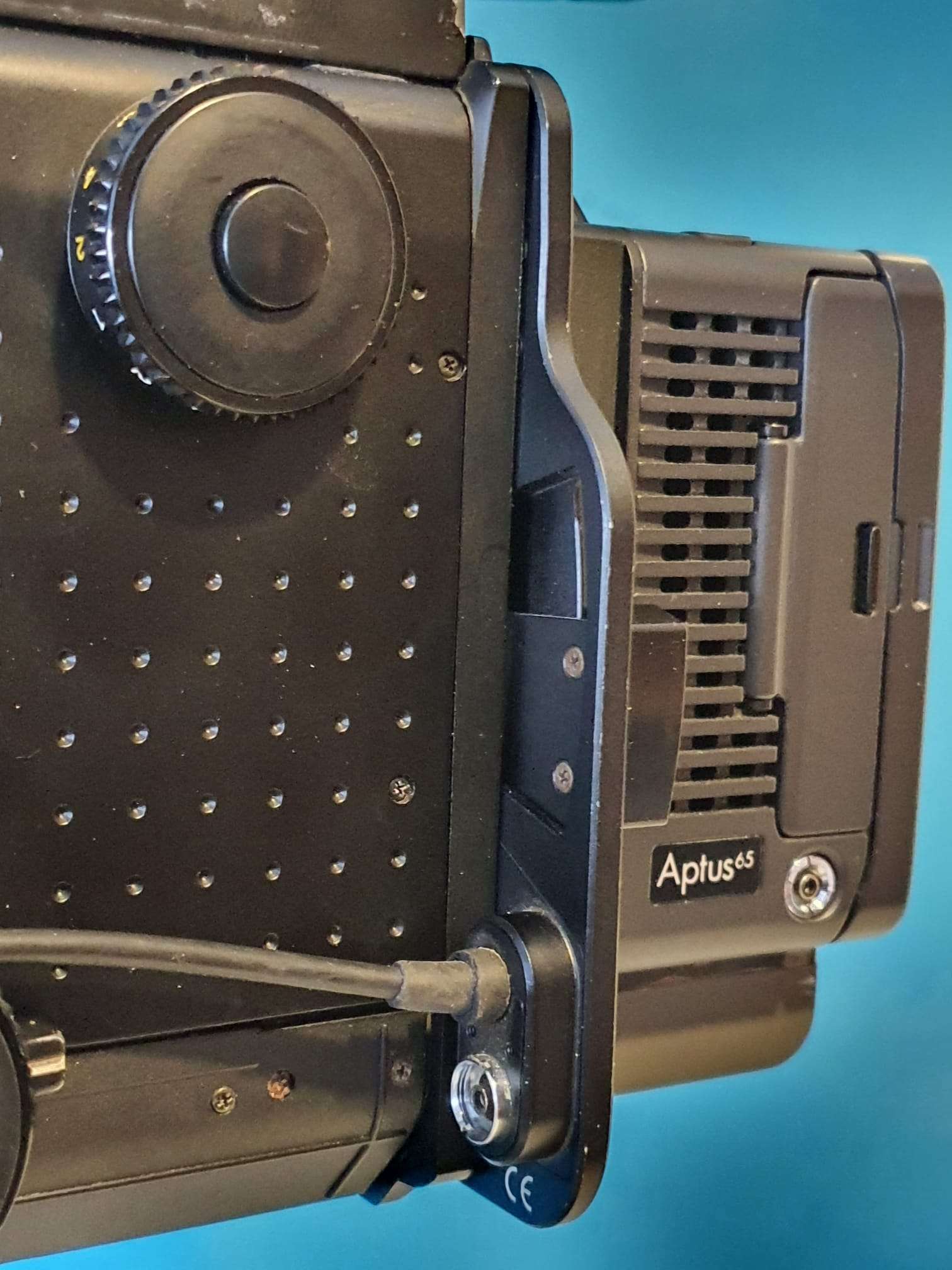
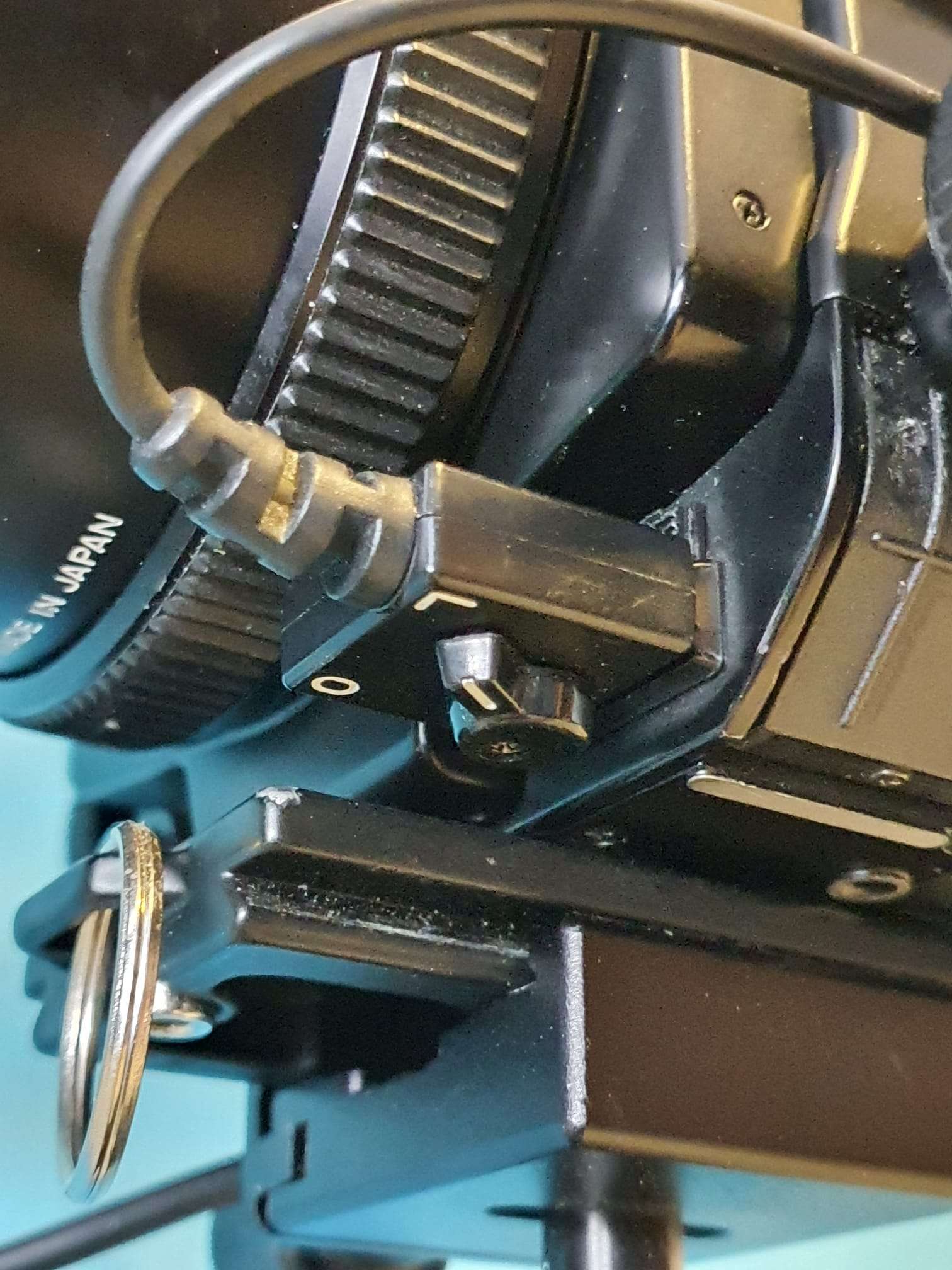
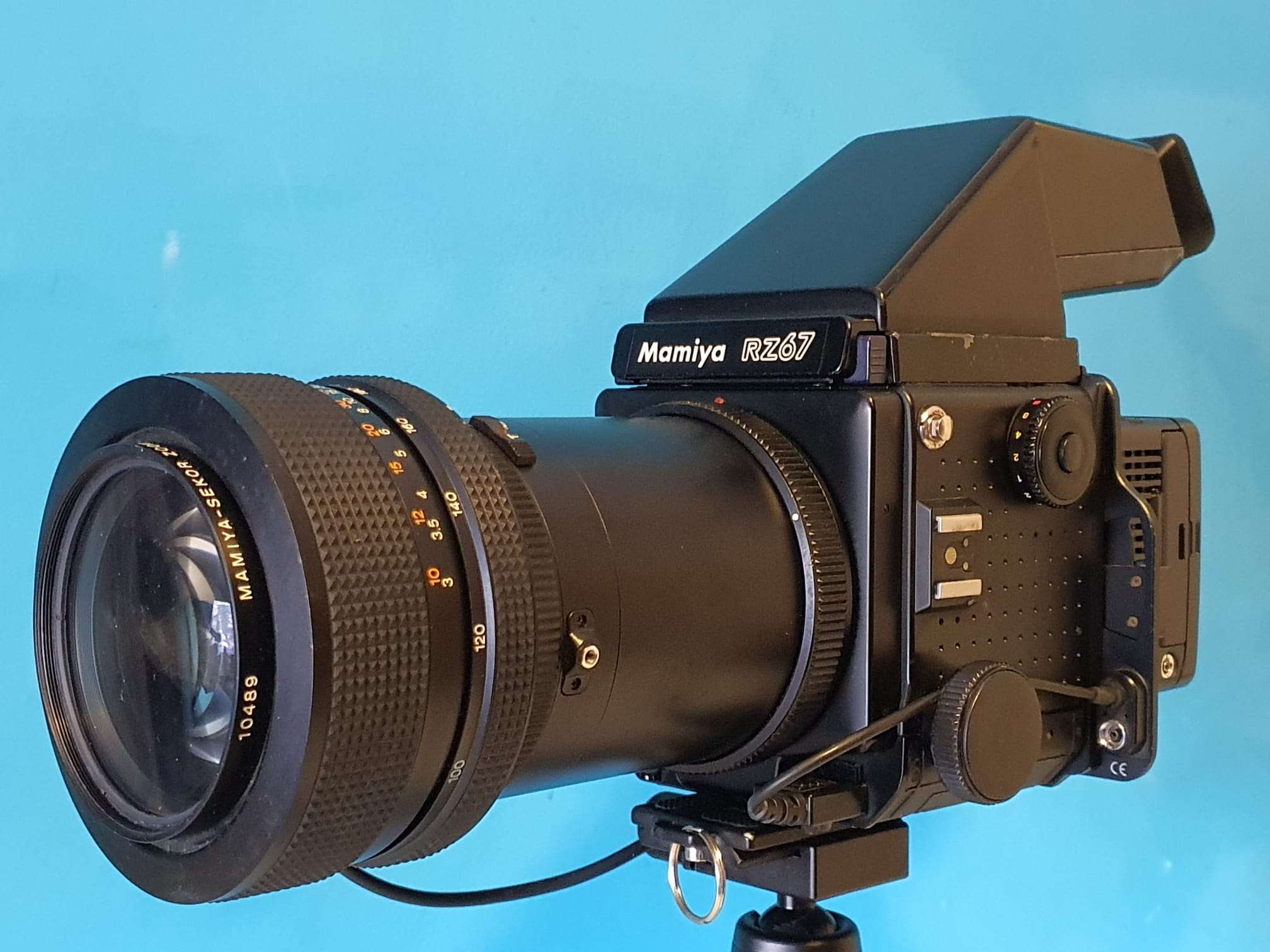
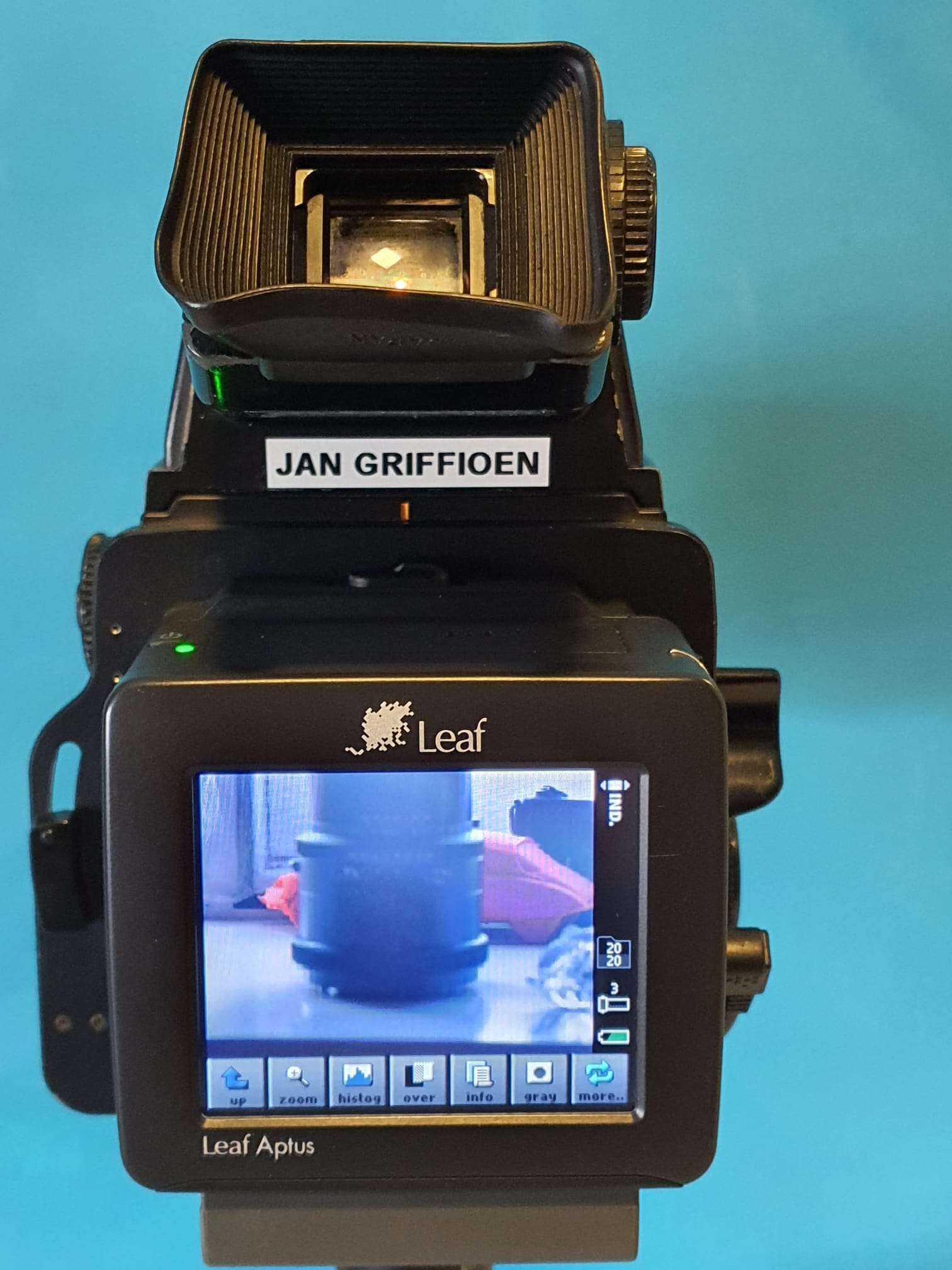
I will not be running around with this outside, since the combined weight is over 4 kilograms. Just too much if you want to seriously shoot anything that is any good.
This will be my studio-, & macro-, and architecture camera since the shallow depth of field will produce amazing pictures, both in B&W and in color.
Maybe a commercial photograph session now and then, I believe that getting a technical factory shot with this cam/combination could turn out to work very nice!
Compact Flash cards: I used an adapter from CF card to SD card that I also use on my Canon 5D MarkII, and it only accepts SD cards up to 32 GB. But that’s OK. I will try to install the wifi SD card as well, since I have that lying arouns somewhere, I will add this in a new post later. The Aptus’s firmware had a setting for this, so I will try this anyway.
The digital back adapter for the RZ67 camera is not really visible between camera and digital back, underneath is a picture of the one I use. It is commonly available but requires a V-mount digital back. V-backs from Leaf or Phase one are very rare to get by, since they are either Mamiya fit (proprietary mount for for the 645 cams) or H-Hasselblad fit. And Hasselblads V-mounts digital backs are very good and fairly easy to get at, yet they are (in my view) very expensive due to their high quality and high pixel rates.

CROP FACTOR
The Mamiya Leaf Aptus 65 has a 44×33 mm sensor of almost 29Mpix. The Aptus has been made for the 6045 line-up and therefore all specs relate to that, and not to the RZ67’s 6×7 cm format.
The maximum (theoretical) film format on the RZ67 is 70x60mm. But the picture size with a 6×7 cm back will be 56mm x 69.2mm.
Even though, most common used on the RZ camera are the 6070 film backs, although a 60×60 is also available but hard to get for a fair price. The 6070 backs are the ones without anything in size labeled on top. Any 6060 or 645 sized back will have this size labeled on the pack’s outside.
The Aptus 65’s crop of 1.3 is defined by Leaf in relation to the medium format definition and this is theoretically only 60x45mm but it is adjusted down, due to cutoffs and such. 60×45 camera size is measured in medium format picture size as 53.7×40.2mm.
The medium format is thus generally defined at 53.7×40.2 mm picture & sensor size, and its surface is 21.59cm2.
The Aptus 65’s sensor is 33x44mm and its surface is ‘only’ 14.52 cm2.
The crop factor of the Leaf Aptus 65 is 1.3 versus medium format.
The full-frame sensor against which all other image sensors are defined is 36×23.9 mm and its surface is 8,6 cm2.
So- even the fact that you won’t use the full width of the 6×7 cm range of the RZ67’s back panel’s covered projection space, the coverage of the Aptus 65’s sensor almost doubles that of a full frame sensor.
The used table is below:
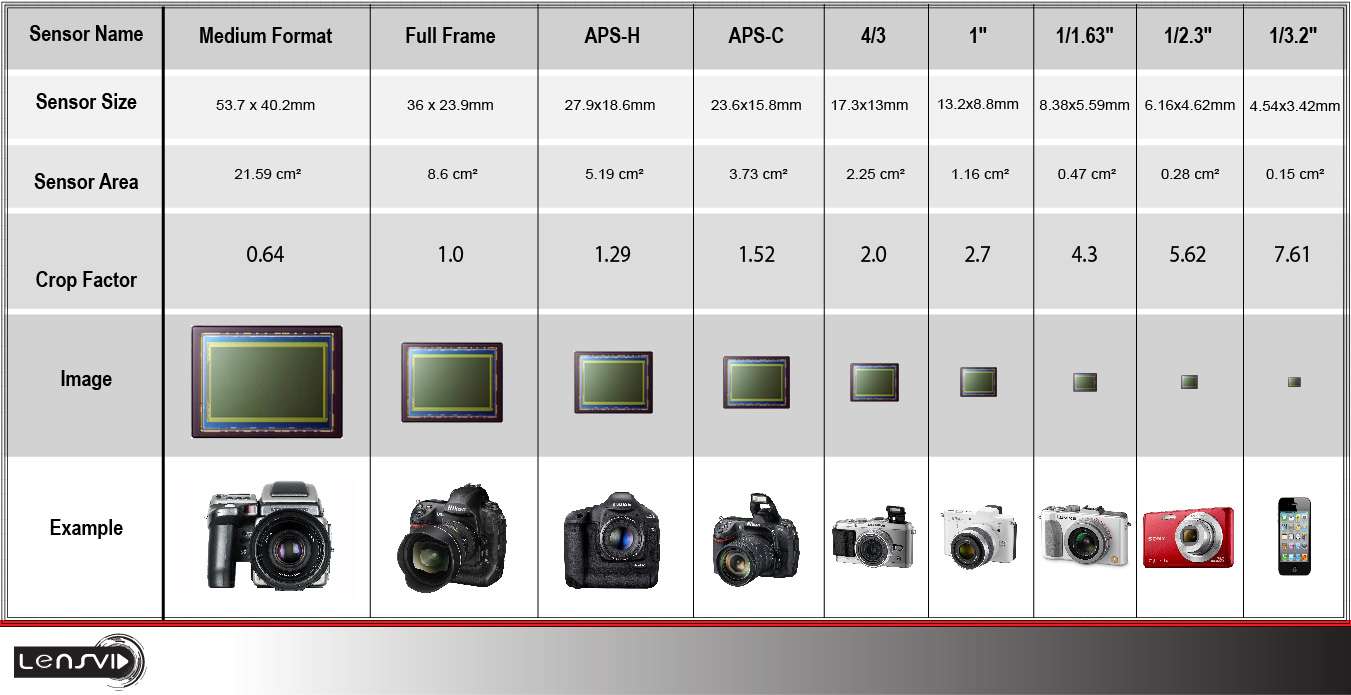
I am, however, still out on the search for a Hasselblad CFV-39 V-mount digital back since it has the extremely good Sony sensor of 49×36.7 mm and it has great specs and image results. Still hesitating to buy this since the prices are above 3000 Euro’s, excluding import duties and VAT. So- adding this makes it cost over 4500 Euro’s. I am still searching for one within the EU, so I don’t need to pay additional costs before I get it.


